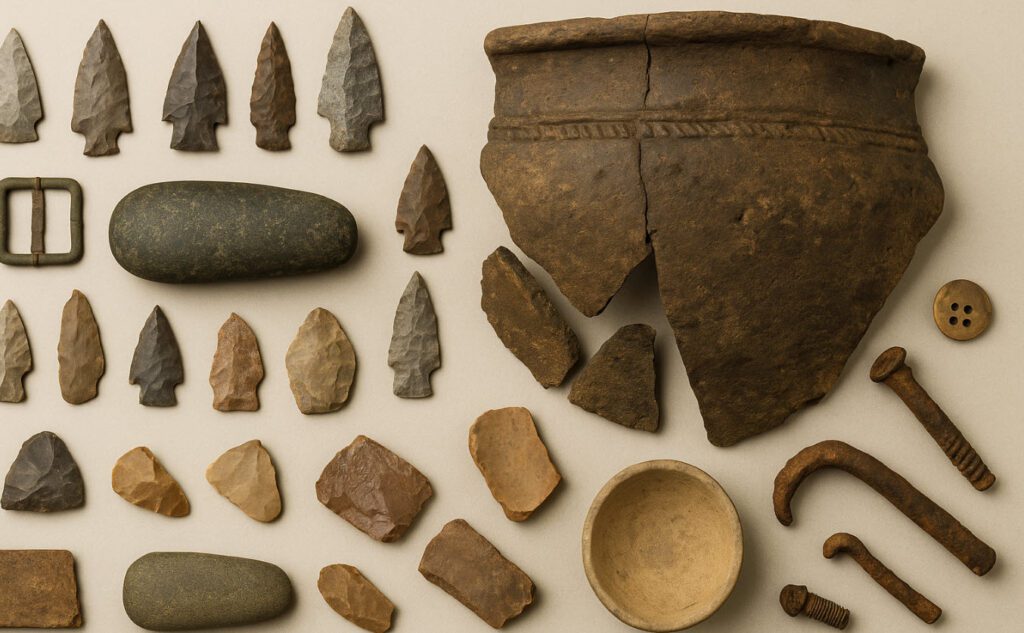(Note: Photo graphic above is for illustrative purposes, and not a representation of actual holdings of the State of New York)
Released records from the New York State Office of Parks, Recreation, and Historic Preservation (OPRHP) reveal detailed inventories of the state’s vast collection of historical and archaeological artifacts. Released under the New York Freedom of Information Law (FOIL), the files catalog thousands of items curated and stored across the state’s museum, park, and research facilities.
The release includes structured database files listing artifact categories, site origins, materials, estimated time periods, and associated state collections. Items span centuries of New York’s cultural history, ranging from prehistoric Native American tools and pottery fragments to 19th- and 20th-century industrial and household objects.
The Databases
The released spreadsheets appear to represent the internal cataloging systems used by the agency’s archaeologists and curators. Together, they include thousands of records drawn from state-supervised excavations and site surveys conducted over decades.
Each database provides metadata fields such as:
- Site code or excavation ID
- Provenience and stratigraphic context
- Artifact type and description
- Material composition (e.g., bone, stone, ceramic, metal)
- Associated cultural period or phase
- Current repository or storage facility
The Historic Collections file serves as a high-level reference table summarizing objects held across different regional collections under state management.
Highlights and Notable Entries
A review of the datasets reveals a remarkable breadth of material documenting New York’s long human history. Among the more notable entries are:
- Projectile points and stone tools from early prehistoric contexts, some listed with associated radiocarbon date ranges.
- Colonial-era artifacts, including clay pipes, glass fragments, and iron implements recovered from 17th- and 18th-century settlement sites along the Hudson River and Long Island.
- Industrial artifacts tied to 19th-century canal and railroad projects, reflecting New York’s rapid technological expansion.
- Domestic objects such as ceramics, buttons, and utensils cataloged from urban excavations, providing insights into everyday life in early New York City and Albany.
While the databases are technical in format, they collectively represent one of the most comprehensive looks at how the state manages, tracks, and preserves its archaeological heritage.
The full spreadsheets are available for download through The Black Vault’s document archive below.
###
Document Archive
 Historic_Collections.xlsx (11MB)
Historic_Collections.xlsx (11MB)
 tblArchFieldCat.xlsx (3.5MB)
tblArchFieldCat.xlsx (3.5MB)
 tblArtifactInvFirst_Fields_Requested.xlsx (20MB)
tblArtifactInvFirst_Fields_Requested.xlsx (20MB)
 tblArtifactInvFirst_Updated_10_20_2022.xlsx (40MB)
tblArtifactInvFirst_Updated_10_20_2022.xlsx (40MB)
 tblArtifactInvSecond_Fields_Requested.xlsx (21MB)
tblArtifactInvSecond_Fields_Requested.xlsx (21MB)
 tblArtifactInvSecond_Updated_10_20_2022.xlsx (42MB)
tblArtifactInvSecond_Updated_10_20_2022.xlsx (42MB)
Response Letter
Follow The Black Vault on Social Media:


